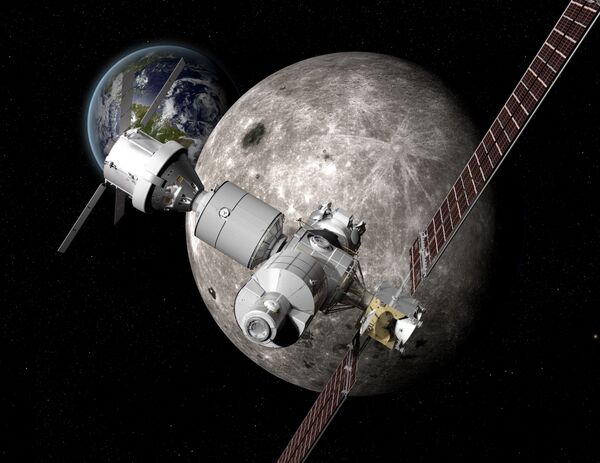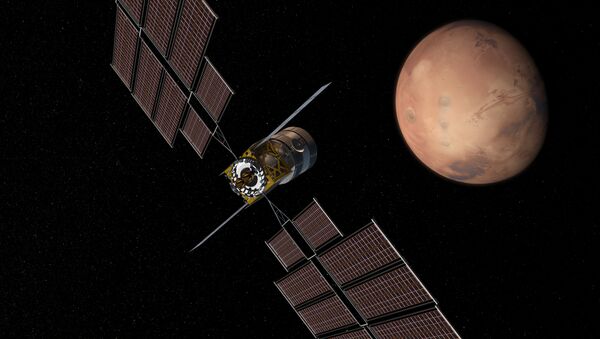Boeing, and five other companies, are already collaborating with NASA to develop the Space Launch System (SLS), which it is hoped will power a trip to Mars. Now, the firm has offered up conceptual designs for other accessories it will be useful for the mission, and a more general vision of how it could be achieved — and made easier on repeat visits. Of particular note are a deep space habitat design, and transport vehicle.
#Boeing unveils deep space gateway + transport to help @NASA achieve Moon to Mars human space exploration https://t.co/b4flbvcf6N #33SS pic.twitter.com/q39TUJmBee
— Boeing Defense (@BoeingDefense) April 3, 2017
The former, the "Deep Space Gateway," is a space station Boeing wants positioned in Cislunar space, which is to say in or beyond the orbit of the Moon rather than in Earth orbit. The company has developed a design for the facility, that it says could be hauled into place by a mere four SLS missions.
The NASA fact sheet for SLS explains its cargo-carrying variants will have sufficient capacity to launch a "small deep-space habitat module" — Boeing's own variation is likely to offer at least one module solution of its own.

Boeing envisages man and machine spending some time orbiting the Moon, to ensure both are road-tested and space-ready prior to a visit to Mars.
Moreover, the company proposes the construction of a Lunar base entitled "Gateway," that will both offer a launching point for a "Deep Space Transport" vehicle, and exploration of the Moon itself. Both the "Gateway" and "Transport" are real, confirmed projects worked on under NASA's Next Space Technologies for Exploration Technologies program and the High Power Solar Electric Propulsion technology development effort within the NASA Space Technology Mission Directorate.
Both the transport vehicle and the gateway habitat will be powered by solar electric propulsion, a promising technology NASA devised for the Dawn spacecraft.
Boeing also puts its name to a timeline that would see the "Gateway" constructed on the Moon by the early 2020s — perhaps too late to make US President Donald Trump's dreams of "American footprints" being imprinted on "distant worlds" by 2026, the country's 250th birthday.
The news follows the unveiling of radical NASA plans for reducing radiation levels on Mars via magnetic fields.
Moreover, Mars ranks just behind Venus as the easiest planet to reach from Earth — although Venus' extreme conditions (such as a surface temperature of 462 °C; 863 °F) likely preclude it from ever hosting human life.
As technology has advanced, and anxieties about the future prospects for humanity on Earth have increased, the race for space colonization has gained momentum.


